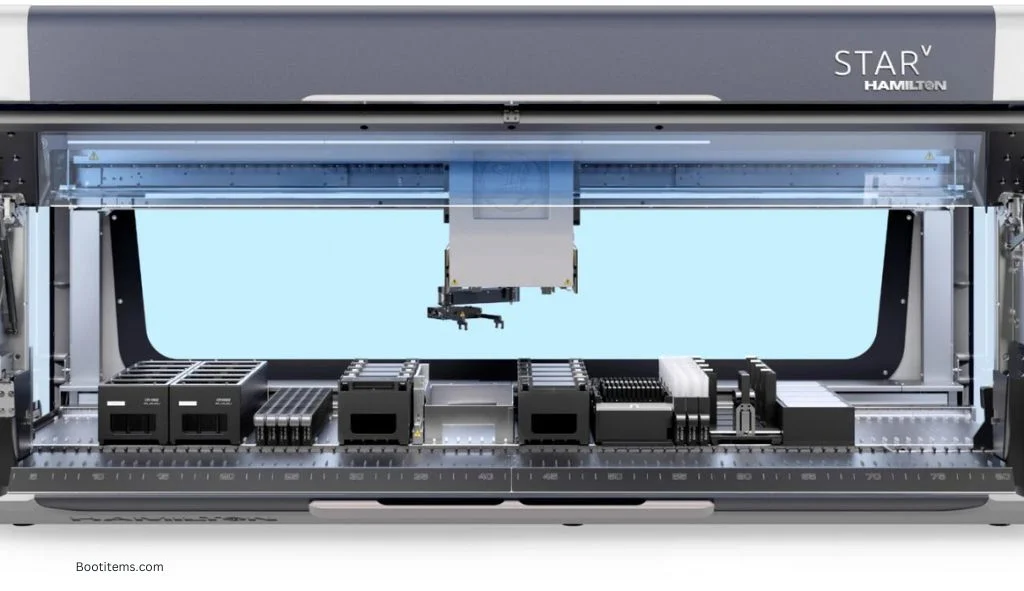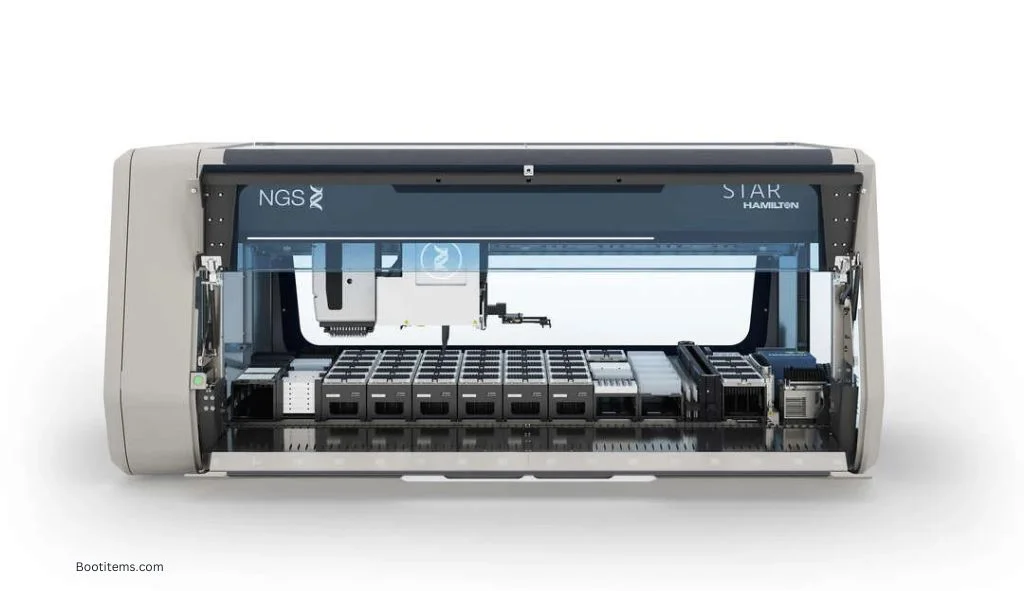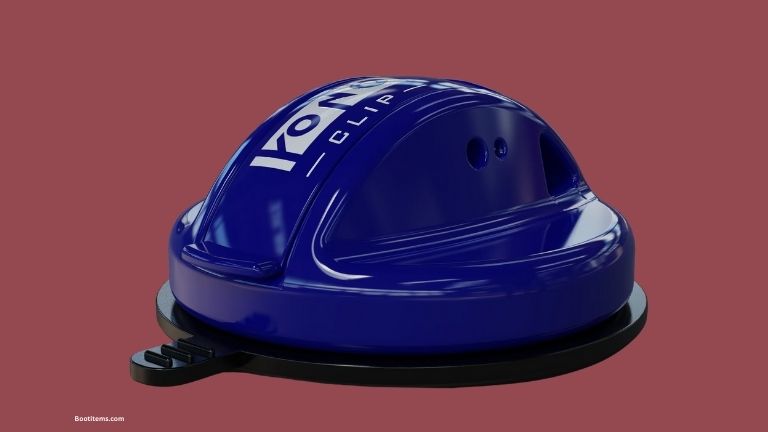Hamilton STAR: Complete Guide to Automated Liquid Handling
The Hamilton STAR is an advanced automated liquid handling workstation designed for precision pipetting in laboratory settings, offering modular components and flexible configurations for various applications.
What is the Hamilton STAR?
The Hamilton STAR (Specialty Transport Aspiration Robot) is a robotic liquid handling platform that automates laboratory workflows. This sophisticated system is designed to handle a wide range of liquid handling tasks with high precision and reliability. As laboratories face increasing demands for throughput, accuracy, and reproducibility, automated systems like the Hamilton STAR have become essential tools in modern research, diagnostics, and industrial applications.
The STAR series represents Hamilton Robotics’ flagship line of liquid handlers, known for their versatility and expandability. These systems can be configured with various modules and accessories to meet specific laboratory needs, from simple liquid transfers to complex assay protocols.
Key Features of the Hamilton STAR
The Hamilton STAR comes equipped with several distinctive features that set it apart from other liquid handling platforms:
- Modular Design: The STAR platform is highly modular, allowing users to configure the system according to their specific requirements. Components can be added or removed as needs evolve.
- CO-RE Technology: The Compressed O-Ring Expansion (CO-RE) technology ensures secure tip attachment and improved precision, with up to 15 times longer lifespan compared to conventional systems.
- Dual Liquid Level Detection: The system incorporates both capacitive detection for conductive liquids and pressure-based detection for all liquid types, including foaming liquids and organic solvents.
- Anti-Droplet Control (ADC): This feature prevents inadvertent dripping by detecting and reacting to pressure changes in real-time, particularly useful when working with volatile organic solvents.
- Total Aspiration and Dispense Monitoring (TADM): Provides real-time monitoring of liquid handling operations for enhanced accuracy and reliability.
- VENUS Software: The intuitive user interface offers both basic and advanced programming capabilities, giving users full control over method development.
Hamilton STAR Models and Configurations
The Hamilton STAR series includes several models designed to accommodate different laboratory needs and space constraints.
STAR vs. STARlet
The main difference between the STAR and STARlet models lies in their deck capacity:
- STAR: Features 54 tracks (T) or 45 SLAS ANSI positions, providing ample space for complex workflows involving multiple labware types.
- STARlet: Offers 30 tracks (T) or 25 SLAS ANSI positions, making it more compact while still delivering the same precision and reliability.
Both models support tip sizes ranging from 10 μL to 5000 μL, allowing for versatile liquid handling capabilities across different volume ranges.
Pipetting Options
The Hamilton STAR can be equipped with different pipetting channels to suit various applications:
- Individual Pipetting Channels: These channels move independently and can spread asymmetrically, allowing for flexible pipetting patterns. Typically configured with 8 channels, though other configurations are available.
- Multi-Probe Heads: The CO-RE 96 and 384 Multi-Probe Heads enable rapid pipetting of entire plates or partial plates, significantly increasing throughput for high-volume applications.
Optional Modules and Accessories
The Hamilton STAR’s functionality can be extended with various modules and accessories:
- Heater Shaker: Enables automated heating and shaking of ANSI/SLAS footprint microplates.
- Heater Cooler: Provides precise temperature control for temperature-sensitive applications.
- Liquid Dispenser: Used for dispensing large quantities of liquid or aspirating liquid waste.
- Cooling Carrier: Maintains samples at predefined temperatures and can identify barcodes via Autoload.
- iSWAP Robotic Transport Arm: Facilitates the movement of plates and tip racks around the deck, enhancing workflow automation.
- Housing Extensions: Keeps contaminants out and adds safety features, available in slim right/left side or wide left side configurations.

Applications of the Hamilton STAR
The Hamilton STAR is utilized across various scientific disciplines due to its versatility and precision.
Genomics Applications
In genomics, the Hamilton STAR automates critical workflows such as:
- DNA/RNA extraction and purification
- PCR setup and cleanup
- Next-generation sequencing library preparation
- Genotyping assays
- High-throughput screening
The system’s precision and reproducibility are particularly valuable in genomics applications, where even minor variations can significantly impact results.
Diagnostic Applications
In clinical and diagnostic laboratories, the Hamilton STAR is used for:
- Sample preparation for diagnostic tests
- ELISA and immunoassay setup
- Clinical chemistry assays
- Molecular diagnostic workflows
- COVID-19 testing and other infectious disease diagnostics
The automation provided by the STAR helps reduce human error and contamination risks in diagnostic settings, where accuracy is paramount.
Drug Discovery and Development
Pharmaceutical companies utilize the Hamilton STAR for:
- Compound management and reformatting
- High-throughput screening assays
- Drug metabolism and pharmacokinetics (DMPK) studies
- Cell-based assays
- Protein crystallization setup
The system’s flexibility allows for the automation of complex protocols required in drug discovery workflows.
Industrial Biotechnology
In industrial biotechnology applications, the STAR assists with:
- Enzyme activity assays
- Microbial strain screening
- Bioprocess development
- Quality control testing
- Formulation development
Programming the Hamilton STAR
The Hamilton STAR can be programmed using two primary approaches: the VENUS software interface and the PyHamilton Python framework.
VENUS Software
VENUS (Virtual Environment for Normalized User Software) is Hamilton’s proprietary software for programming and controlling their liquid handling robots. Key aspects of VENUS include:
- Graphical User Interface: VENUS provides a drag-and-drop interface for method development, making it accessible to users without extensive programming experience.
- Power Steps: These pre-configured steps simplify the setup of common assays and procedures.
- Visual Guides: The software includes visual guides for frequently used pipetting tasks, such as sample transfer, reagent addition, serial dilution, replicates, and hit picking.
- Error Handling: VENUS offers customizable error recovery options and comprehensive error reporting to help troubleshoot issues during method execution.
While VENUS is user-friendly, some users find the drag-and-drop interface less intuitive for complex methods compared to text-based programming languages.
PyHamilton
PyHamilton is an open-source Python interface for programming Hamilton liquid handling robots, offering an alternative to the VENUS software. Key features of PyHamilton include:
- Python-Based Programming: PyHamilton allows users to control Hamilton robots using Python, a widely-used programming language with extensive libraries and resources.
- Flexibility: The framework provides unlimited flexibility for method development, enabling complex workflows that might be challenging to implement in VENUS.
- Open-Source Community: As an open-source project, PyHamilton benefits from community contributions and continuous improvement.
- Integration Capabilities: Python’s versatility facilitates integration with other laboratory systems, data analysis tools, and databases.
PyHamilton was developed for the Hamilton STAR and STARlet on Windows XP, Windows 7, and Windows 10, with VANTAGE series support available through plugins.
HSL Programming
Hamilton Script Language (HSL) is the underlying programming language used by the VENUS software. For users who prefer text-based programming over the drag-and-drop interface, HSL offers a more direct approach:
- C/C++-Based Syntax: HSL is based on C/C++ programming languages, making it familiar to users with programming experience.
- Script Editor: The Hamilton HSL Method Editor provides access to HSL reference libraries, including keywords, functions, and syntax documentation.
- Direct Control: HSL allows for more direct control over the robot’s operations compared to the VENUS interface.
Despite its advantages, documentation for HSL can be difficult to find, presenting a challenge for new users trying to learn the language.
Creating a Simple Transfer Method
One of the most basic operations on the Hamilton STAR is a liquid transfer from one container to another. Here’s a step-by-step guide to creating a simple transfer method:
Setting Up the Deck
- Open the Hamilton Method Editor and create a new system deck layout or use an existing one.
- Add the necessary labware to the deck:
- Tip racks (e.g., 1000 μL high-volume tips without filter)
- Source containers (e.g., deep well 96-well plates)
- Destination containers (e.g., 96 PCR rack)
Creating the Method
- Go to File > New Method to create a new method.
- Add an Initialize step to the method (typically set to “Off” unless you want to initialize every time).
- Add an Aspirate step for the channels:
- Select the source labware (deep well plate)
- Specify the aspiration volume
- Select the tip type
- Choose the appropriate liquid class for your sample
- Specify the tip pickup location
- Set the aspirate position (how far the tips will go into the plate)
- Add a Dispense step:
- Select the destination labware (PCR plate)
- Specify the dispense volume (or dispense all)
- Set the dispense height
- Choose what happens to the tips after dispensing (stay on channels, eject to waste, or return to tip rack)
- Save the method and open Run Control to execute it.
Maintenance and Troubleshooting
Proper maintenance is essential for ensuring the longevity and reliable performance of the Hamilton STAR.
Routine Maintenance
Regular maintenance tasks include:
- Daily Cleaning: Wiping down the deck and checking for any visible contamination or damage.
- Tip Ejector Cleaning: Regularly cleaning the tip ejectors to prevent buildup that could affect tip pickup and ejection.
- Waste Container Emptying: Emptying the waste container as soon as it becomes full to prevent overflow.
- Channel Maintenance: Periodically checking and maintaining the pipetting channels according to the manufacturer’s recommendations.
- Software Updates: Keeping the VENUS software and firmware up to date with the latest versions.
Common Issues and Solutions
Users may encounter various issues when working with the Hamilton STAR:
- Tip Pickup Failures: Often caused by misaligned tip racks or dirty tip ejectors. Ensure proper rack positioning and clean the ejectors regularly.
- Liquid Level Detection Problems: Can result from electromagnetic interference or static electricity. Ensure the instrument is properly grounded and positioned away from sources of electromagnetic fields.
- Method Execution Errors: May occur due to programming errors or hardware issues. Use the simulation mode to test methods before running them on the actual instrument.
- Communication Errors: Can happen if multiple programs are trying to communicate with the robot simultaneously. Ensure that only one program (e.g., VENUS Run Control) is communicating with the robot at a time.
Advanced Features and Techniques
Beyond basic liquid handling, the Hamilton STAR offers advanced features for more complex applications.
Liquid Level Detection
The Hamilton STAR employs dual liquid level detection methods:
- Capacitive Liquid Level Detection (cLLD): Works with conductive liquids by detecting changes in electrical capacitance when the tip contacts the liquid surface.
- Pressure-Based Liquid Level Detection (pLLD): Functions with all liquid types, including non-conductive liquids, by detecting pressure changes as the tip enters the liquid.
These detection methods ensure accurate aspiration volumes and prevent contamination by avoiding tip submersion beyond necessary depths.
Monitored Air Displacement
The monitored air displacement feature allows the STAR to:
- Detect clots or empty wells in real-time
- Track volatile solvents during pipetting
- Adjust for pressure changes that could affect accuracy
- Provide feedback on the success of liquid handling operations
Multi-Probe Head Operations
For high-throughput applications, the CO-RE Multi-Probe Heads offer significant time savings:
- 96-Well Format: The CO-RE 96 Probe Head can replicate a 96-well microplate in approximately 35 seconds and reformat four 96-well plates to one 384-well plate in about 140 seconds.
- 384-Well Format: The CO-RE 384 Probe Head can replicate a 384-well microplate in approximately 35 seconds and reformat four 384-well plates to one 1536-well plate in about 140 seconds.
Integrating the Hamilton STAR into Laboratory Workflows
The true value of the Hamilton STAR lies in its ability to integrate into broader laboratory workflows and systems.
LIMS Integration
The Hamilton STAR supports bi-directional Laboratory Information Management System (LIMS) integration, enabling:
- Automated sample tracking
- Result reporting
- Workflow management
- Data integrity maintenance
- Compliance with regulatory requirements
Integration with Other Instruments
The STAR can be integrated with various laboratory instruments to create comprehensive automated workflows:
- Plate readers
- Centrifuges
- Incubators
- PCR thermocyclers
- Storage systems
- Barcode readers
Data Management and Reporting
The STAR’s software capabilities include:
- Worklist handling for managing sample information
- Badge number tracking for user identification
- Autoload with tracking for sample traceability
- Labware reporting for documentation
- Barcode reading for sample identification
Frequently Asked Questions
How does the Hamilton STAR compare to other liquid handling robots?
The Hamilton STAR distinguishes itself through its modular design, precision pipetting technology, and versatile software options. Compared to competitors, the STAR offers superior flexibility with its range of pipetting options and expandable deck configurations. Its CO-RE technology provides better tip attachment and longer lifespan, while the dual liquid level detection system handles a wider range of liquid types accurately.
What are the space and utility requirements for a Hamilton STAR?
The Hamilton STAR requires adequate bench space based on the model (STAR or STARlet) and any additional modules. The system operates within specific environmental conditions: temperature between +15°C and +35°C and relative humidity between 15% and 85% (non-condensing). It requires standard electrical connections and can function at altitudes up to 2000 meters above sea level.
Can the Hamilton STAR handle hazardous materials?
Yes, the Hamilton STAR can handle hazardous materials with appropriate safety measures. The system’s enclosed housing options help contain potential aerosols, and the automated nature of the system reduces direct user contact with hazardous substances. However, users should follow their institution’s safety protocols and consider additional containment measures for highly hazardous materials.
What training is required to operate a Hamilton STAR?
Operating a Hamilton STAR typically requires training on both the hardware and software aspects of the system. Basic training covers deck setup, method execution, and routine maintenance. Advanced training includes method development in VENUS or programming with PyHamilton/HSL. Hamilton offers training programs, and many institutions provide in-house training for their users.
How long does it take to develop a new method for the Hamilton STAR?
The time required to develop a new method varies depending on complexity. Simple liquid transfers can be programmed in minutes, while complex assays with multiple steps may take days or weeks to optimize. Using templates and existing methods as starting points can significantly reduce development time. The learning curve for VENUS is relatively shallow for basic methods but steeper for advanced programming techniques.

Samantha Yates is a creative writer and journalist with expertise in content creation and editing. She holds an MA in Creative Writing and brings professional experience from Lionbridge, where she developed engaging content for leading technology companies







